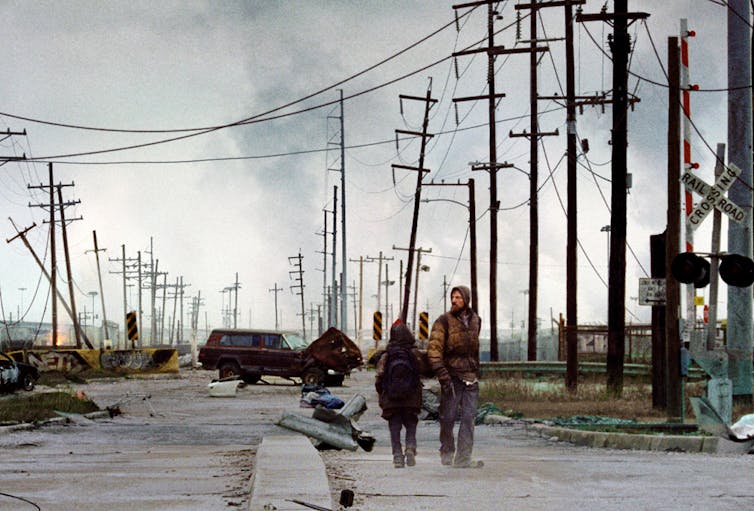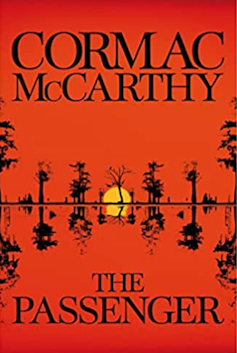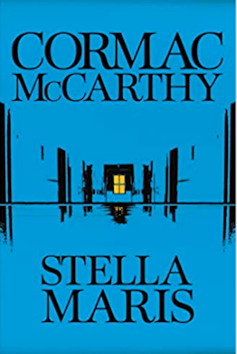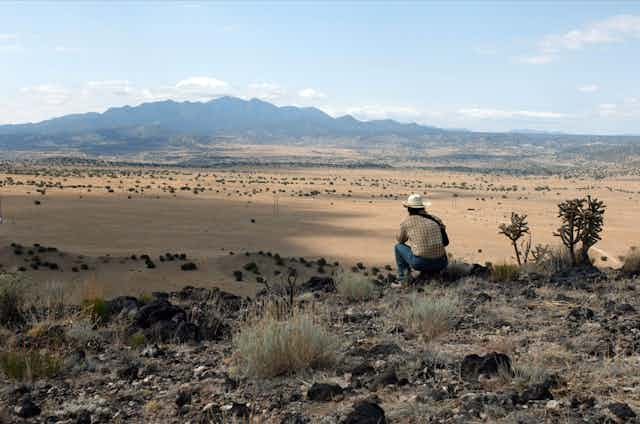The novelist Cormac McCarthy was suspicious of punctuation, profoundly interested in violence, respected skill and physical labour, and loved the richness of the English language. He was particularly fond of short, declarative sentences and the word “and”.
McCarthy’s much lamented death at 89 has attracted international headlines and a renewed interest in his writing. He leaves behind 12 novels covering historical and speculative fiction.

A journey through McCarthy’s work is not for the fainthearted, nor the weak-stomached. These are stories of society’s outcasts – those who have found themselves out of time, out of place, or simply out of luck. McCarthy’s world is often grim, populated by oddballs, criminals, misfits and hard, violent men.
For those unfamiliar with his writing, now is the perfect time to delve into his work. After a master’s degree on William Faulkner, my own journey with McCarthy began with the Border Trilogy, consisting of All the Pretty Horses (1992), The Crossing (1994) and Cities of the Plain (1998).
Fascinated with these frontier novels about life in the ranches and deserts of the US-Mexico borderlands in the 1930s, 1940s, and 1950s, I followed McCarthy back to Faulkner by reading his first three novels – The Orchard Keeper (1965), Outer Dark (1968), and Child of God (1973). Then I turned to No Country For Old Men (2005) and The Road (2006).
This journey led not only to a PhD, but also my first book, following my exploration of McCarthy’s archive at Texas State University.
Despite all the hardship and horror in his works, I found myself sustained by McCarthy’s unique prose. Like the father from the dream that ends No Country For Old Men, McCarthy was always “fixin’ to make a fire somewhere out there in all that dark and all that cold” – a place where humanity could endure, despite all that assailed it.
Finding his place
McCarthy’s work divides into two sections – one spanning the period 1965-1979 and the other from 1985-2022. The first section is southern, gothic and modernist, set in McCormac’s native Appalachia.
The Orchard Keeper (1968), Outer Dark (1968) and Child of God (1973) – lie within the southern gothic tradition of Flannery O’Connor, Carson McCullers and William Faulkner.
Despite plots featuring murder, incest and necrophilia, McCarthy seeks the humanity in the grotesque. Even Lester Ballard, the necrophiliac murderer of his third novel is “a child of God much like yourself perhaps”, a statement that brings home the horror of Lester’s tale.
The final novel of this first period is Suttree (1979). One of the contenders for McCarthy’s masterpiece, it took him a decade to write. Set amongst the down-and-outs of Knoxville, Tennessee, Suttree is a pitch-black comedy that brings the modernist style of James Joyce to the world of John Steinbeck, its power a combination of high art and low action.
Dark deeds and bad people
The second period of McCarthy’s career begins with the other candidate for his masterpiece, Blood Meridian (1985). Marking McCarthy’s move to the south-west, Blood Meridian is a novel of violence, based on the activities of scalp-hunter John Glanton. McCarthy’s fifth novel introduces readers to Judge Holden, a giant albino capable of horrific acts of calculated violence and the malevolent heart of the book.
Blood Meridian’s overwhelming style reflects the overwhelming violence it depicts. A text where a single sentence can run for a full page, Blood Meridian is a sprawling, endlessly rewarding deconstruction of America’s frontier mythology.
The Border Trilogy features common protagonists, most notably the superlative cowboy John Grady Cole, and displays McCarthy’s respect for the skills of the frontier, even as he marks the obsolescence of those very abilities. Evoking the tropes of the American Western, the trilogy continues the project begun in Blood Meridian to expose America’s idealisation of its cowboy past.
No Country For Old Men (2005), McCarthy’s final western, came to international attention with the Coen Brothers’ film adaptation. This novel draws on the sparse style and hard-bitten tropes of the thriller to present the pursuit of Llewelyn Moss by the unstoppable hitman Anton Chigurh.
Apocalypse and humanity
The Road (2006) is McCarthy’s best-known novel. His only future-set tale deals with the struggles of a nameless man and boy to survive in the wreckage of a post-apocalyptic America. The Road depicts the end of society, but also the moment that the values and language of that society also end. Heartbreaking at times, it wrings maximum effect out of its minimalist style.

McCarthy’s final two novels are a pair. The Passenger (2022) is a return to Suttree, but one in which its similar cast of grotesques and ne’er-do-wells is filtered through McCarthy’s interest in mathematics and its implications for our understanding of ourselves and the world.

Stella Maris (2022) is told through a series of dialogues between doomed mathematics genius Alicia Western and her therapist, in the lead up to the suicide with which McCarthy begins the novel.
If you are coming to McCarthy’s novels for the first time, your best entry point depends upon which version of McCarthy you find most appealing. A great western, All the Pretty Horses is the most accessible. The Road is a also popular starting point, demonstrating McCarthy’s style at its most distilled.

But for me, the clear candidate for the great American novel must be the fevered, searing Blood Meridian. Here, McCarthy’s greatest novel plunges deepest into the American darkness and violence that so fascinated him throughout his career.
McCarthy was a delver into the dark, fixated by the awful violence and terrifying rage that lies beneath the surface of the safe and sanitised stories America tells about itself. In doing so, he sought to expose the sometimes unpalatable truth of American history. In a time when this history seems more contested than ever, McCarthy’s searching, unflinching prose will be much missed. If ever there was time to read him, it is now.

